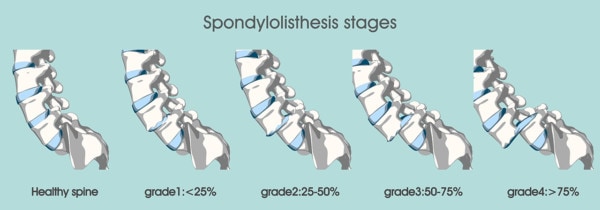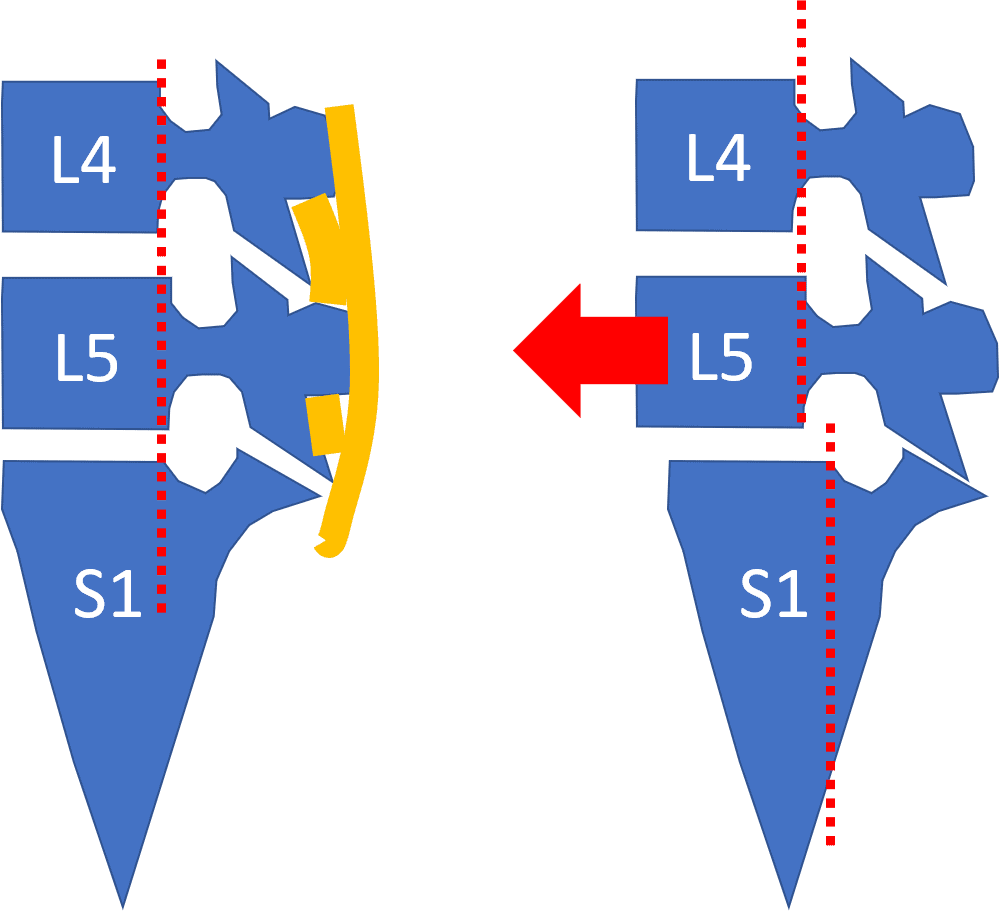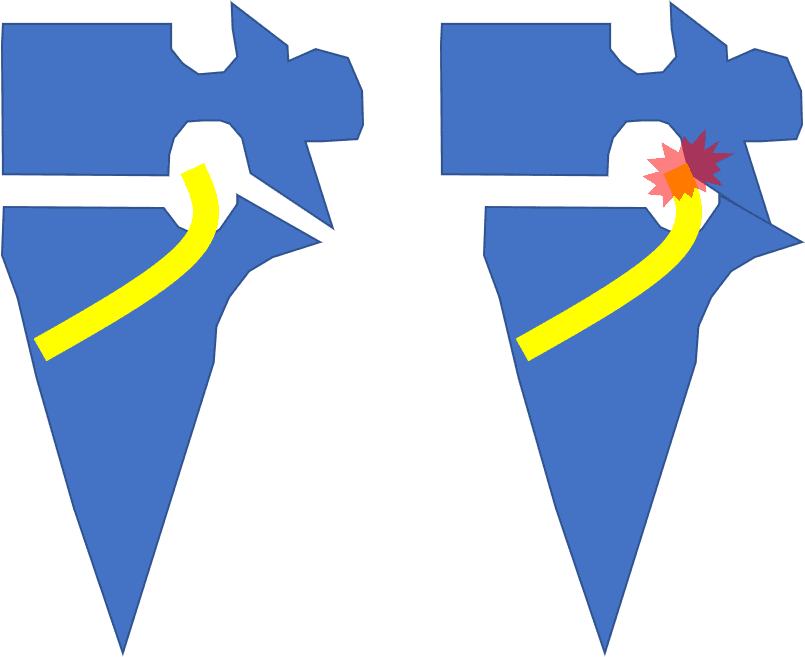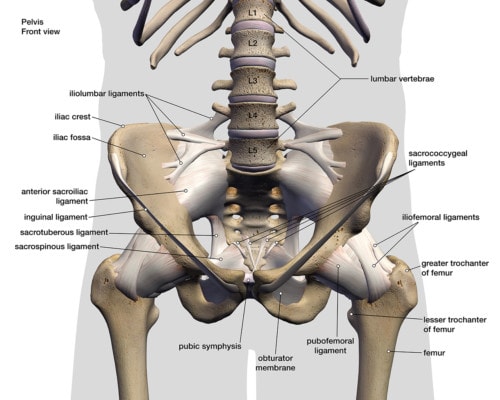Ask Dr. C Episode 18: Spondylolisthesis and Hip/Knee Pain

Kit1114/Shutterstock
I like today’s question because it brings up a critical low back and hip/knee connection. So let’s dive in as I work my way through the holiday edition of “Ask Dr. C”.
The Question
I have Spondylolisthesis in my lower back which is now starting to cause pain in my left hip and knee as well as lower back. The orthopedic Dr. is recommending fusion. Will stem cell treatment help this condition?
What is Spondylolisthesis?
Let’s break down the Latin down: SPONDY=spine and LISTHESIS=slipped, hence we have “slipped spine”. That usually means that one vertebra has slipped forward on the other. Why is this a big deal?
Below we have an aligned spine on the left. The red dashed line shows you that the back of all of the vertebrae (L4, L5, and S1 (the sacrum or tailbone)) are lined up. In the spondylolisthesis image on the right, the L5 vertebra has slipped forward on S1 and now you can see that the back of the vertebrae are not lined up.

Why is this a problem? The holes where the spinal nerves exit are made up of a top half that comes from one vertebra and a bottom half that comes from another. In the image below, you can see what happens to that “foramen” or hole where the nerve exits:

Above on the right, you can see how the foramen gets smaller and the nerve can get irritated as L5 moves forward. This is usually a dynamic problem, meaning that the nerve usually gets irritated as the person moves or lifts causing the L5 to shift. Hence, restabilizing this area is critical for treatment. More on that later.
How Could a Low Back Spondylolisthesis Cause a Hip or Knee Issue?
The spinal nerves that exit the low back supply the sensation and the muscles in the legs. For example, if the extra motion caused by the spondylolisthesis leads to spinal nerve irritation, this can impact how the muscles in the legs fire. Let’s dive into that issue in more detail.
Many of us take for granted that the muscles in our legs protect our joints. These include muscles that surround the hip and knee. If these muscles casn’t fire properly, then the joints get extra wear and tear. In our example above of L5 slipping forward on S1, the exiting L5 nerves and the descending S1 nerves can get irritated with that extra motion. Hence, the butt and hamstrings muscles can begin firing abnormally, causing issues in the hip and knee.
Answering the Question
So why is the doctor recommending fusion in the question above? Again, the issue is that the extra motion of one vertebra on the other can cause spinal nerve root irritation which can lead to pain in the hip and the knee. Hence, a fusion surgery will insert hardware to bolt the unstable levels together, ending the extra motion. One downside to this approach is the extra motion that then happens above and below the fusion. For more information on that topic, see my video below:
However, is this needed? Could there be another way?
What causes the extra motion? Loose ligaments. Hence, if we could tighten these ligaments and avoid the big surgery, that would be a much more elegant solution. How can you tighten ligaments?
There are a number of options for tightening ligaments using autologous orthobiologics, or substances derived from your own body. These include platelet-rich plasma and bone marrow concentrate (a same-day stem cell injection). These can be injected precisely using fluoroscopy and/or ultrasound imaging into ligaments like the supraspinous, interspinous, iliolumbar, and other ligaments. In fact, just take a look at all of these ligaments in white:

Hank Grebe/Shutterstock
The upshot? Yes, precise orthobiologic injections can help reduce the extra motion that happens in spondylolisthesis. This could end up improving hip and knee pain by reducing spinal nerve irritation.

If you have questions or comments about this blog post, please email us at [email protected]
NOTE: This blog post provides general information to help the reader better understand regenerative medicine, musculoskeletal health, and related subjects. All content provided in this blog, website, or any linked materials, including text, graphics, images, patient profiles, outcomes, and information, are not intended and should not be considered or used as a substitute for medical advice, diagnosis, or treatment. Please always consult with a professional and certified healthcare provider to discuss if a treatment is right for you.
